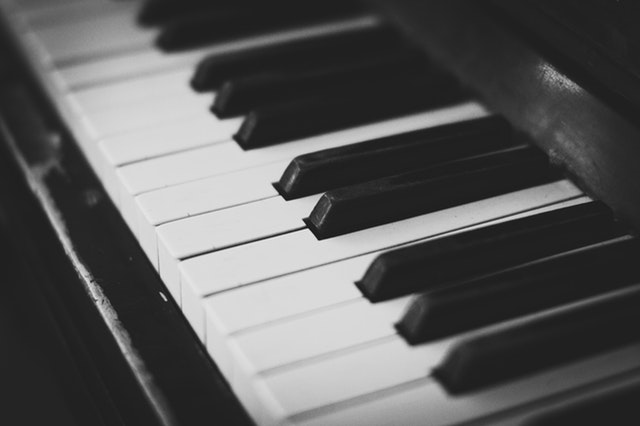As you can see, it's simple to define the hidden identity of piano chords with Major and minor triads. But what about extended chords? Let's take a look at a few of those.
Here we have C Major 7. In case you're not familiar, this is simply a C Major triad with a B added to it. The B is the 7th tone and creates an extended chord referred to as a Major 7.
Again the C Major triad is apparent in this chord. However, with this type of C chord voicing, the E minor triad is also apparent.
However, with this type of C chord voicing, the E minor triad is also apparent.
The hidden identity of piano chords don't just reveal chords that are opposite each other. They can also reveal chords of identical qualities such as the D flat Major 9 chord.
 The hidden identity of these chords are easy to spot because the chords are in root position. But sometimes the chords may be inverted (the notes arranged in a different order).
The hidden identity of these chords are easy to spot because the chords are in root position. But sometimes the chords may be inverted (the notes arranged in a different order).
Here we have G minor 7 in an open voicing. The root and 5th stand alone as a G power chord (a root and 5th) voicing with no 3rd. Above the root (G) of the chord is the B flat Major chord.
Above the root (G) of the chord is the B flat Major chord.
There's actually two inversions of B flat Major including this one.
Even though I've titled this article "The hidden identity of piano chords", there's actually a musical term that defines these chords on top of chords. They're known as upper structure chords. Upper structure chords aren't something you intentionally play, they just simply exist within a chord.
This concept makes it easier to identify and voice chords. You have many more possibilities than what I've covered here. This isn't even scratching the surface. Try to notice the hidden identity of piano chords (or upper structure chords) when you're studying and playing your own music.
Until next time, Go Play!




 questions about it. This is especially true of chords. But like myself and other musicians, there are times when defining chords can be elusive.
questions about it. This is especially true of chords. But like myself and other musicians, there are times when defining chords can be elusive.


 Between G and B is a Major third interval defining a G Major Chord.
Between G and B is a Major third interval defining a G Major Chord.




 Between F and A is a Major third interval defining the F Major chord.
Between F and A is a Major third interval defining the F Major chord.

 However, with this type of C chord voicing, the E minor triad is also apparent.
However, with this type of C chord voicing, the E minor triad is also apparent.

 The hidden identity of these chords are easy to spot because the chords are in root position. But sometimes the chords may be inverted (the notes arranged in a different order).
The hidden identity of these chords are easy to spot because the chords are in root position. But sometimes the chords may be inverted (the notes arranged in a different order). Above the root (G) of the chord is the B flat Major chord.
Above the root (G) of the chord is the B flat Major chord.

